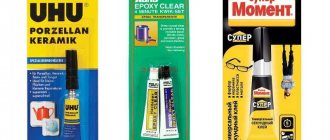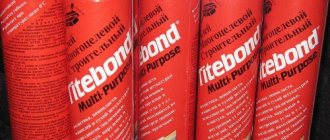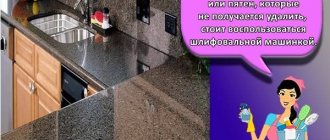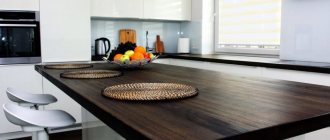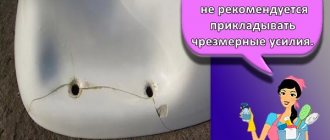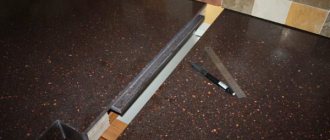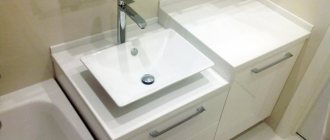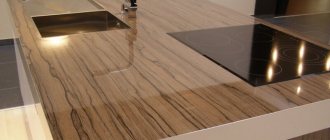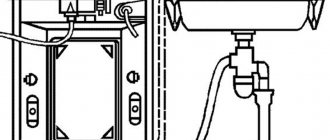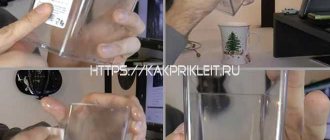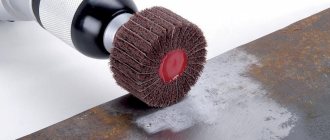How to glue furniture.
How to glue furniture? The question is probably not entirely correct, most likely it’s worth thinking about the question of what glue to glue furniture with. There are two answers in this case, the first is to learn to choose the appropriate wood glue yourself, and the second is to listen to the advice of more experienced comrades. This is what we will dedicate our article to, in the first part we will learn how to choose the right adhesive composition, and in the second part we will check with our own hands which of the specimens we have chosen is really capable of gluing wood.
Choosing furniture glue.
Learning how to choose the right glue for furniture is quite simple. The base, chemical composition, all kinds of additives and other details fade into the background if furniture glue does not meet our consumer requirements. Therefore, when choosing an adhesive, we are primarily interested in the consumer properties of the adhesive, namely:
- Availability. Possibility to purchase at your nearest store.
- Toxicity. The smell of solvents, hardeners and other things is harmful to our health.
- Convenient to use. He opened the tube, applied it, and closed the tube.
- It glued really well. (More about this in the second part of our article.)
Unfortunately, we cannot do with consumer selection criteria alone; to obtain a high-quality result, we will have to take into account the following technical characteristics of furniture glue:
- For the tree. In most cases, furniture consists of wood and what is made from it into plywood, fiberboard, chipboard, etc. therefore, on the package with glue it should be written - for wood.
- Transparency. After drying, the glue should not differ from the color of the wood, otherwise the glue line will be noticeable.
- Hardness. For example, epoxy resin-based glue forms a rigid edge at the gluing site, and with further sanding the edge can stand out significantly. Therefore, after drying, the glue must remain sufficiently elastic.
- Vitality. The time from the moment the glue is applied until it sets must be sufficient to assemble furniture consisting of several elements, such as a stool. The optimal lifetime of the glue can be considered 10 minutes.
- Moisture resistance. When using glued furniture in an apartment, this criterion is not necessary to take into account, but for country furniture, the moisture resistance of the glue can be very useful.
In practice, all of the above brought me the following results.
Several suitable examples of glue were selected, as this is necessary for the next part of the article. Perhaps in your case the result of your trip will be different, everything depends on the assortment of the store.
How to glue furniture?
It's time to test the strength of the glue we have chosen. We do not have a specialized laboratory at our disposal, and the result of such tests, expressed in kilograms per square centimeter or something similar, does not mean much to an ordinary person. We have a specific question: does the furniture stick well or so-so? Therefore, we will simply glue and break, whoever lasts longer is the best. So that we are not accused of advertising or something to the contrary, we will rename the wood glue we have chosen. We'll call the one in the small yellow package glue 1, the one in the red package glue 2, and the remaining glue with the green label glue 3. To conduct our experiment, we took three wooden blocks 20 by 50 millimeters and half a meter in length, We sawed them down the middle at an angle of 45 degrees and coated them with glue and waited a day, as this condition was indicated on the label.
Well, then they started breaking. Having clamped one end of a wooden block with a clamp, the opposite end began to be loaded with disks from an ordinary dumbbell (large 2.5 kg, small 1.25 kg).
Glue 1 withstood a load of 5 kilograms, by 7.5 kg. Its gluing strength was not enough. To be fair, it is worth noting that gluing with this glue also caused trouble, so this result did not surprise me.
Glue 2 withstood the maximum load at our disposal (15 kg), and only after changing the test structure did Glue 2 give in. In general, it can be noted that glue 2 showed a worthy option and can be trusted with gluing furniture.
Glue 3 withstood everything we did with it, at certain moments there were fears that the tabletop of our workbench would not withstand it as it began to sag. It was possible to reach the ultimate strength of adhesive 3 only under more severe conditions. The conclusion is obvious, your furniture will break anywhere, but not where you glued it together with glue 3.
If we talk about the price-quality ratio of glue for furniture, then we can say that when using glued furniture in an apartment, glue 2 will be optimal. Glue 3 costs almost twice as much as glue 2, but it offers increased moisture resistance, which is essential in furniture for the dacha. This article about how to glue furniture will be considered complete. Finally, we will only add that today the concepts of wood glue and furniture glue are practically blurred and there is no point in focusing your attention on this.
In this article, we did not set ourselves the goal of underestimating or, on the contrary, overestimating the quality of any glue and we apologize in advance to the manufacturers if this happened.
Which adhesive for chipboard furniture is better?
When choosing custom-made furniture, it is necessary to take into account many factors, in addition to the quality of materials and fittings for future furniture, you must also pay attention to the method by which the edge will be applied to the elements of the product. Particularly important is the edging of furniture that will be used in conditions of high humidity and exposure to high temperatures. The simplest example is the kitchen, which faces moisture, heat, steam and mechanical damage every day. So which edging method is better and can protect your kitchen for many years?
How to fix chipboard
Properly selected furniture adhesive significantly extends the life of the set or its individual elements.
Contents Varieties Properties Application Recommendations for selection. Using this product, you can restore damaged parts, improve the appearance, and return the former functionality of a cabinet, sofa, etc.
In addition, the glue must meet the following requirements:. Another important parameter when purchasing an adhesive is its cost. For small volumes of work, you can purchase a more expensive option.
However, high cost does not always guarantee adequate quality. In this case, it is better to pay attention to the properties of the product and select a composition that is optimally suited for a particular material. There are several types of adhesive mixtures, which differ depending on the purpose.
Each of them has high drying strength. A certain type of adhesive is selected, as a rule, based on its composition. When working with this type of material, you cannot use any other type of adhesive other than PVA. Not only can they be ineffective, but they can also damage the surface. For example, liquid super glue instantly corrodes the fabric base.
Depending on the form of release, the following types of adhesive compositions are presented on the building materials market: Furniture adhesive containing the solvent cyclohexane, acetone, hydrocarbon compounds, etc., quickly hardens due to the evaporation of volatile substances. Water-based products take longer to bond. To ensure maximum strength and reliability of connections, the adhesive joint must be made with a product with an optimal composition.
Ingredients should be selected taking into account the following parameters:. Hot melt adhesive does not contain active volatile solvents. To firmly fix the surfaces, they must be pressed against each other and held for some time until the adhesive seam initially hardens. Reliability of gluing is ensured by the resins, rosin, and synthetic rubber included in the composition. Some options contain a small amount of highly volatile solvents, which reduces the setting time of the mixture. Durable versions of water-based adhesives sometimes require placing the treated surfaces under a press.
This ensures better bonding of the layers and increases the reliability of the adhesive seam. The quality of gluing depends not only on the properties of the adhesive composition, but also on the correct preparation of the surface. For example, porous materials such as plywood, wood, chipboard must be pre-dried and cleaned. A high percentage of moisture can increase the setting period of furniture glue and reduce the strength of the adhesive seam.
Furniture adhesive must be selected not only taking into account the type of material being glued, the load applied, and external conditions. Don't forget about ease of application. With the development of the chemical industry, the range and variety of adhesive mixtures increases. At the same time, the quality of popular and widely used furniture adhesives used for restoration and repair is improving.
When purchasing adhesives for furniture, you should give preference to those options that meet the following requirements: A low value may result in rapid drying and absorption of liquid into the base material.
As a result, the surfaces may not stick together. High density requires quick application, longer curing time. When examining the packaging, you need to pay attention to the manufacturer’s recommendations regarding use on specific surfaces and types of materials.
Following the instructions will help to avoid damage to the layers of furniture during the restoration process. Open menu. Spring Peach wallpaper in the interior The extraordinary comfort of a living room, decorated in a rustic style. The use of decorative bricks in the interior of the hallway. Rating: 5 ratings, average: 4.40 out of 5. Did you like the post?
Share with your friends! What else to read? A respectable and cozy living room in the English style. The extraordinary comfort of a living room decorated in a rustic style. How to choose a countertop for the kitchen? Spring Home design in a modern style or modest luxury. Facades and roofs: color scheme. Sitemap Contacts About us We are on social networks:.
Application
Furniture adhesive must be selected not only taking into account the type of material being glued, the load applied, and external conditions. Don't forget about ease of application.
applying glue to plywood boards
- Hot melt adhesive will provide fixation of furniture edges (PVC, melamine, etc.). It is applied using a gun, inside of which the adhesive composition melts to a liquid state.
- Animal glue, which is unfairly considered an outdated option, can be used when gluing plywood. The inconvenience of use is that the granules must be dissolved in water at high temperature (in a glue boiler). The resulting seam can be melted down and the plywood can be re-attached with it many years later.
- Contact types of adhesives for furniture on a polymer (rubber, butadylene-styrene) basis are the best option for restoration work with upholstery, joints of fabric bases, wood, leather, and plastic parts. The adhesive seam is quite elastic and resistant to temperature and humidity.
- A subtype of contact furniture adhesives is acrylic, which contains latex. The environmental friendliness and high strength characteristics of this product allow it to be used for working with children's furniture made of wood, plastic, chipboard, and other materials.
- PVA furniture adhesive (Lux type) is intended for gluing particle boards, veneer, pressed cardboard, laminate, plywood, and wood. Forms a durable film of increased elasticity.
- Epoxy (two-component) is a universal option for fixing any surface. It can be used to fill cracks and gaps.
- Rubber furniture adhesive (grade 4010) is the best option for attaching metal, wood, fabric, rubberized fragments to a base. It has increased elasticity and resistance to external influences.
- BF (phenolic butyral), Rapid 100 are used for fixing the foam layer to the surface.
Why do we make furniture from plywood?
Main purpose: The adhesive is used in carpentry and furniture production for gluing wood, similar materials plywood, OBS boards, fabrics, leather, glass, ceramics and some plastics. The adhesive is recommended for gluing products used in rooms with high air humidity. Main purpose: Foam rubber adhesive is used when assembling furniture; it is intended for gluing foam rubber, batting, felt, styrofoam, polyurethane foam and other types of padding to wood, plywood, fibreboard, chipboard, cardboard and gluing similar materials together. This furniture adhesive is suitable for elastic joints; for more rigid joints, Mars glue is recommended. From us you can purchase several brands of wood glue and furniture glue, all of which are characterized by the absence or reduced content of solvents and harmful substances. The wood adhesive we offer, Himkontakt-Stolyar, is an aqueous dispersion adhesive and does not contain solvents.
Which adhesive for chipboard furniture is better?
The modern furniture industry cannot do without adhesive materials, which are used for:. Furniture glue is also used during restoration work, when there is a need to repair a cabinet, table or stool. We are talking about the use of special adhesive composites that ensure maximum strength of the assembled structure. A wide range of adhesive materials is justified by the specifics of the industry, in which textures of different internal composition and surface are used: natural solid wood, laminated chipboards, plywood, etc. Among the advantages of the commercial offer are a loyal price and timely delivery. To clarify the cooperation algorithm, just contact our representative. The strength and safety of manufactured furniture depends on the quality and reliability of the glue. Professional adhesive materials used in the production of cabinet and upholstered interior accessories must meet the following parameters:.
Properties of furniture glue
Furniture adhesives ensure the strength of the connection and their composition is optimal. The masses correspond to the following parameters:
- Resistant to temperature changes. Furniture structures are often used outdoors, placed near radiators or stoves, ovens; the adhesive is able to withstand temperature changes while maintaining its original properties.
- Withstand heavy loads. This applies to bookshelves, chairs, sofa seats, etc. Such structures are constantly under pressure, but high-quality adhesives cope with it.
- Vibration resistance. Furniture is often installed near washing machines and various equipment. In order for the connection to be strong, the fact of stability is taken into account.
- Resistance to chemical elements. Furniture items undergo constant cleaning and are often subjected to chemical attack.
Technical data is discussed using the example of a thermoplastic adhesive composition:
- The composition includes resins, rosin, synthetic rubber. Some brands contain solvents; they are added to reduce setting and drying time.
- Operating temperature is within 120–200 degrees.
- Hardening occurs 40 seconds after application.
For a strong connection, fixation is carried out before initial setting.
Furniture adhesive: chipboard, plywood, wood
One of the most popular building materials is chipboard. In practice, situations often arise when it is necessary to connect such slabs together with planes using glue. This is done to increase the strength of the finished product or to obtain a small part of the required thickness, without resorting to cutting a whole sheet of chipboard. How to glue chipboard? Of the variety of adhesive compositions produced by modern industry, the following glue is suitable for gluing chipboard: For gluing chipboard, PVA glue, casein and other compounds of animal origin, resorcinol or urea-formaldehyde adhesives, as well as hot-melt glue are suitable.
Operating procedure
To repair the damage, you need to prepare a mixture with sawdust - the material on which the chipboard itself is made. It is advisable to select sawdust that best matches the shade of the chipboard. A powder that is too fine is not suitable, since the patch made from it will quickly crumble and peel off from the hole. Large sawdust is also not suitable, as it is poorly saturated with glue. It is best to take medium-grain material in the required volume.
Sawdust is mixed with PVA glue or wood glue in a suitable container. The amount of glue should be less than sawdust. Using a stick, thoroughly mix the mass, although you can also use a gloved hand.
The result should be a thick and flexible “dough” that retains its shape when squeezed. If the substance spreads over your hand, add more sawdust; if it crumbles, pour in an additional portion of PVA.
After 10-15 minutes of standing, the product is ready for use. The procedure for repairing a damaged slab will be as follows:
- remove all protruding pieces from the area with scuffs or potholes, peel off the nicks;
- using a file, make the edges of the defect as even as possible;
- Long screws are screwed into the hole from the inside or nails are hammered in, their heads are tied with thin wire so that the entire structure serves as a reinforcing mesh;
- if the damage is small, reinforcement is not performed;
- the ends of the hole are lubricated with PVA glue;
- fill the defect with sawdust, press it tightly, compact it, and allow it to dry;
- sand the base with sandpaper, then cover it with self-adhesive film or decorate it in another way (if necessary).
Reinforcing a hole in chipboard
We recommend: Composition, properties, drying time and instructions for use of super glue
It happens that the hole in the chipboard is through. From this situation, make exactly the same sawdust mixture, the damaged area is cleaned of dust and shavings. Afterwards, on the back side of the hole, temporarily screw an oiled piece of chipboard onto short self-tapping screws and make reinforcement (if there is no oil, it will be difficult to remove the backing). Fill the hole with a repair compound, let it dry, and after drying, remove the piece of chipboard and paint or paste the surface.
Features of choosing furniture glue
There are situations when you need to glue one type of material to another type of material. The question arises, what to glue it with? Now there are many different ways of gluing materials, and not only of the same type, such as glass to glass or metal to metal, but also ceramics to plywood, etc. How to glue glass to glass? There are many types of adhesives that allow you to glue glass to glass. Glue for gluing car glass may be suitable for you; there are specialized transparent adhesives for gluing glass.
Features of choice for chipboard
To make furniture, you should choose an adhesive that helps attach chipboard to other materials. It should provide a durable and flexible fixation. An increased degree of adhesion is of no small importance. Furniture is often placed near heating sources. Therefore, the seams should not suffer from exposure to elevated temperatures. The environmental friendliness of the composition is of no small importance. Today, water-based products are most often used.
Paint chipboard furniture
VIDEO ON THE TOPIC: Wood glue. Glue for wood.
Contents: Features of selection Types of glue Application of glue Rating of the best adhesives Preparing and carrying out work Video material. Home furniture, especially those that are used daily, often break down. It may appear scratches, cracks or chips. And in this case, you can do the repairs yourself, without resorting to the help of specialists. This will require a little time and high-quality glue, which can be found in any hardware store. Surely, those who took on such work for the first time had a question: what is the best glue for furniture repair?
Splicing of laminated chipboard parts
Often, when making furniture, in addition to standard parts made from 16 mm slabs, there is a need for thicker ones that create volume, giving the product monumentality and reliability.
The most common case of such application: when creating a table, the sides and drawers are made of 16 mm laminated chipboard, and the table top is made of thicker material.
In order to realize your plans without resorting to merging of slabs, you will need two materials of different thicknesses. For example, a 16 slab will be used for the table body (legs, partitions, shelves, etc., and a 22 (25) mm slab will be selected as a tabletop.
The disadvantage of this approach is the high cost of the resulting item, since more sheets are purchased (a large number of completely unnecessary scraps are also expected), and the footage for cutting them also increases.
The Zveno company offers a more economical option - splicing parts!
In addition to real savings on the purchase of material, you get a finished panel with a thickness of 32 mm, which definitely looks more advantageous in relation to slabs with thicknesses of 22 and 25 mm!
The first and most common example (two identical panels):
step No. 1 (add 20 mm to the dimensions)
Step No. 2 (glue the parts together)
3 (we make a finishing cut)
- When creating a cutting task, two blanks from a 16 mm slab of the same size are brought in. In this case, it is important to add 20 mm in length and width to these dimensions, so that later it will be possible to saw the workpiece to the final size.
- These blanks are cut.
- Both parts are glued together using a quick-drying two-component adhesive. (The gluing force is very high - the parts cannot be separated in any way).
- The workpiece is sent to the cutting center, where operators make a finishing cut along the perimeter of the part.
This option is good because at the end you get a part that can be front on both sides and you have the opportunity to choose a better texture pattern (provided you use such a plate). It is also worth noting that the calculations of such blanks are as simple as possible and it is difficult to make a mistake.
Second option (panel with cast-off):
Step No. 1 (calculate the blanks)
step number 2 (gluing)
Step No. 3 (make a finishing cut)
- When creating a cutting order, one façade panel is included in the detailing, with the dimensions increasing in length and width by 20 mm.
- Blanks are also added to the task, which will be glued to the first part. These parts must be increased in width by 10 mm each.
- Next, the blanks are cut.
- Then the gluing process occurs.
- The finishing operation is to cut the parts to final dimensions around the perimeter.
The advantages of this method are that it is more economical in terms of material consumption.
Minuses:
- The complexity of calculations and the floating final value of the internal size (+/-1 mm on parts measuring 1000x1000 mm).
- There are restrictions on edging (see restrictions section)
- Tolerances on internal dimensions between parts have been increased (see restrictions section).
- The mark from the scoring saw will not be on the scrap side, but on the front side of the part, which during further edging work will lead to an increased gap between the plate and the edge. The larger the part, the more noticeable it will be. We cannot saw such parts on a machine in such a way that the cut follows the cast-off due to the technical limitations of the sawing center.
Splicing parts also allows for different combinations using different thicknesses when needed.
We can join two pieces of 10 mm each and in the end you will have a final slab of 20 mm.
You can achieve the following variations, if necessary:
- 10+16=26 mm
- 10+22=32 mm
- 10+16+10=36 mm
- 16+22=38 mm
- 16+16+16=48 mm
Also, with this combination, you can get two-color parts , if necessary for the project, where on one side there will be, for example, green, and on the opposite side orange. And so on.
If you have questions about this service, please contact our managers!
Send your questions or assignment to: [email protected]
Furniture glue
Properly selected furniture adhesive significantly extends the life of the set or its individual elements. Contents Varieties Properties Application Recommendations for selection. Using this product, you can restore damaged parts, improve the appearance, and return the former functionality of a cabinet, sofa, etc. In addition, the glue must meet the following requirements:. Another important parameter when purchasing an adhesive is its cost. For small volumes of work, you can purchase a more expensive option.
How is it better than laminated chipboard, and is it even possible to make furniture from it? Let's figure it out. This smell lingers with you for some time, and it is nothing more than formaldehyde fumes, which is the basis for the glue used to hold together the chips used to make chipboard.
Edge materials
Edging the open surfaces of furniture can be done using various decorative elements that differ in the quality of the material, appearance and, accordingly, cost.
- Melamine tape. The simplest and cheapest edge. It is used in budget products and can be destroyed by moisture or mechanical stress. The main advantage of such a tape is its price and ease of application.
Advantages and disadvantages of melamine edging - PVC edge . May have a thickness of 0.4 or 2 mm. It is customary to glue thicker tape to the front surfaces, and thinner tape to hidden ends. This edge protects furniture well from chips and shock loads, but gluing it at home is difficult - this requires special equipment.
- ABC plastic . The most durable option. Plastic edging is done only in production.
- T-shaped profile . It was used in the past, when there were few specialized machines for edging, and milling machines were installed in every workshop. A milling cutter was used to cut out a longitudinal groove in the end into which the edge is inserted.
- Overlay T-shaped profile . T-profile edging is the most convenient option for independent use. It is enough to simply glue it to the end of the chipboard using liquid nails or glue. The disadvantage of this solution is the edge protruding above the surface, which increases the thickness of the product and after some time becomes clogged with dirt.
Features of choosing glue intended for furniture, useful tips
When repairing or creating furniture, you need to use numerous fasteners and compounds. Any material used must be of high quality and reliable, since the durability and resistance of a piece of furniture to various factors depends on it. That is why furniture adhesive is selected with special care, as it must be safe, easy to use, fast to harden and resistant to environmental influences.
Purpose
Furniture glue can be used during different processes:
- direct production of interior items. Often people prefer to install environmentally friendly and unique structures created with their own hands in their homes. To do this, a drawing is formed, parts are prepared, and then they are connected with fasteners or glued together using high-quality glue. In this case, it is necessary to take into account what material the product is made of, since the correct choice of adhesive substance depends on this;
- repair of furnishings. Often high-quality models break due to significant impact or other factors. They can be repaired independently in different ways, but often only gluing individual elements is suitable. A special furniture glue is suitable for this. It is recommended to work with it with a special tool, due to which it is possible to apply the substance to the most inaccessible areas of the object.
Using high-quality and reliable furniture glue has many advantages:
- for any material, you can choose a special composition that is ideally suited to the structure and characteristics of the surface, therefore, ideal and reliable bonding of coatings is guaranteed;
- a highly elastic adhesive seam is formed;
- it is advisable to choose a waterproof product that can easily withstand exposure to moisture and does not lose its properties and adhesive parameters;
- high-quality and reliable compositions gain maximum strength in just 6 or 8 hours;
- It’s really easy to use this glue, so anyone without the appropriate experience or specific skills can handle furniture repair.
A significant point is the competent choice of the adhesive substance itself, for which the characteristics of the surfaces to be glued and the operating conditions of the furnishings are taken into account.
The best brands on the market
There are many effective products on sale that provide reliable fixation of chipboard objects.
"Carpenter PVA Moment"
This is a universal substance that is distinguished by its water-dispersion base. It is used to secure plywood, chipboard and other materials for a strong hold. After application, it is recommended to wait 20 minutes. The composition does not affect the shade of the coating. It is recommended to carry out work at a temperature of 5-30 degrees.
The disadvantages of the coating include insufficient moisture resistance. It is also not recommended to work at low temperatures.
"Titebond"
This composition is suitable for fastening wooden structures. The adhesive is used in the manufacture of flooring and plywood. The base can be polymer, protein, polyurethane. The product is resistant to moisture and frost. It provides reliable fixation and is resistant to solvents. Excess substance can be easily removed before polymerization begins.
"Kleyberit" 303.0, 501.0
Adhesive 303.0 is resistant to moisture and provides fixation to all types of wood. After drying, the composition has a white color. It can be used at temperatures down to -30 degrees. Substance 501.0 is characterized by a polyurethane base. It is resistant to moisture and high temperatures. The composition is capable of fixing wooden surfaces. It can also be used to combine wood with tiles, ceramics, and concrete. The composition can be used for surfaces inside and outside. The disadvantage of the product is that it is difficult to remove from the skin, so it is recommended to work with it in personal protective equipment and thoroughly ventilate the room.
See also
Characteristics and types of glue for roofing felt, installation methods
Selection rules taking into account the furniture material
For any piece of furniture, it is advisable to separately select the optimal adhesive. Any composition has its own individual characteristics and parameters, so for a plastic structure it is advisable to choose a different solution than for a wooden one.
When choosing glue, the following rules are taken into account:
- if you need to work with fabric, foam rubber or leather, then PVA glue is usually chosen;
- the connection of wooden parts is usually carried out using joiner's compound;
- when working with veneer, hot melt adhesive is ideal;
- For manual veneering, animal glue is used, and to use it, you must first melt it in water.
The packaging of any adhesive indicates which surfaces it is ideally suited for, so it is advisable to follow these recommendations from the manufacturer.
In addition to studying the material for furniture production, other factors are additionally taken into account when choosing a mixture:
- the composition should not contain trichloroethane, which is hazardous to health;
- the color should match the color of the furniture;
- the density of the solution should not be less than 1.1 g/cm3;
- The optimal ones are those created on the basis of synthetic elastomers, which better glue different materials, and at the same time do not lead to their destruction in any way.
Thus, if you choose the glue wisely, there will be no problems or difficulties with its intended use.
Twin rafters
Paired rafters are made up of at least two boards, which are placed close to each other with their wide sides, leaving no gaps, and are stitched along the entire length with nails in a checkerboard pattern, one after another.
Lengthening rafters from paired boards occurs by simultaneously joining the parts end-to-end and overlapping to the second rafter board, due to which not only the length of the element increases, but also its strength. When choosing rafters, you need to pay attention to the fact that the distance between the joints of the joining boards is more than one meter and is located on the product in a checkerboard pattern. The hinge joints should not be opposite each other, and each joint should be protected by a solid board.
Sloping rafters are the longest elements of rafter systems, and the best material for their creation is a paired rafter board.
How to splice timber along the length, watch the video:
Application nuances
You should not only choose the adhesive solution wisely, but also have a good understanding of the basic rules for its use, these include:
- before using any solution, carefully study the instructions from the manufacturer, based on which you can determine what material such adhesive is suitable for, as well as how to work with it correctly;
- the composition is studied to ensure the absence of dangerous and toxic substances, since if they are present, then the material must be handled carefully, and it is also not suitable for furniture intended for the home;
- all actions must be carried out either outdoors or in a well-ventilated area, and protective clothing must be worn;
- All surfaces are well cleaned of dust or dirt before gluing. It's also worth making sure they are completely dry;
- most compositions are white or yellow in color, so if you have to work with multi-colored structures, it is recommended to choose a colorless composition;
- The glue should not be applied in a too thick layer, and spread it over the two surfaces to be glued, then carefully connect them and press them tightly together.
If two-component solutions are used, then the material is applied to one surface, and a hardener must be applied to the other, which ensures ideal bond strength. Thus, furniture adhesives come in a variety of forms. They differ in composition, basic characteristics and nuances of use. When choosing, you need to consider what material the interior items are made of. You cannot choose materials for your home that contain hazardous substances. When working with glue, safety precautions must be observed.
Properties
to tightly bond the surfaces of the beams, clamp them with a clamp
To ensure maximum strength and reliability of connections, the adhesive joint must be made with a product with an optimal composition. Ingredients should be selected taking into account the following parameters:
- resistance to temperature load (use of objects outdoors in the open sun, near heating appliances, gas, electric stoves);
- strength under weight load (seats of sofas, chairs, table legs, shelves in closets, other elements that can withstand the weight of objects);
- vibration resistance – furniture located in close proximity to washing machines, generators, and other work equipment;
- resistance to chemical attack - refers to those elements that are supposed to be washed frequently with household chemicals (kitchen, bath, toilet).
Technical parameters of thermoplastic furniture adhesives:
- melting temperature value is within 80-100 o C;
- the working temperature of hot melt adhesive is 120-200 o C;
- hardening period - from 5 to 40 seconds depending on the composition.
Hot melt adhesive does not contain active (volatile) solvents. To firmly fix the surfaces, they must be pressed against each other and held for some time (until the adhesive seam initially hardens). Reliability of gluing is ensured by the resins, rosin, and synthetic rubber included in the composition. Some options contain a small amount of highly volatile solvents, which reduces the setting time of the mixture.
liquid glue in tubes for gluing fiberboard surfaces
Durable versions of water-based adhesives sometimes require placing the treated surfaces under a press. This ensures better bonding of the layers and increases the reliability of the adhesive seam.
The quality of gluing depends not only on the properties of the adhesive composition, but also on the correct preparation of the surface.
For example, porous materials such as plywood, wood, chipboard must be pre-dried and cleaned. A high percentage of moisture can increase the setting period of furniture glue and reduce the strength of the adhesive seam.

